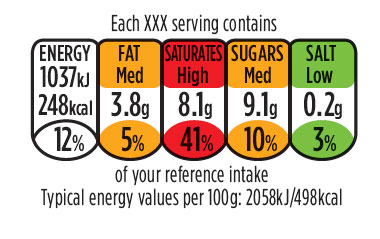There is a great deal of discussion in the media and in the marketplace itself about the effectiveness of current government mandated food labeling. This was all kicked off by a study from two McGill University researchers that was published in the Annals of the New York Academy of Sciences. The study concluded that current labeling is not only confusing and difficult to use and interpret – but that the resulting nutritional choices will be only a little bit better than chance.
Lead author, Peter Helfer (a PhD student in psychology and Neuroscience at McGill) explains, “One product may be low in fat, but high in sugar, while another product may be just the opposite. Nutrition Facts labels can highlight nutrition conflicts but fail to resolve them. Even educated and motivated shoppers have difficulty picking out the most nutritious product with these labels.”
 The study also looked at labeling systems from other countries. The Traffic Light System from the UK offers a bit more guidance, but still leaves users weighing positives and negatives. NuVal labeling (http://www.nuval.com/How)
The study also looked at labeling systems from other countries. The Traffic Light System from the UK offers a bit more guidance, but still leaves users weighing positives and negatives. NuVal labeling (http://www.nuval.com/How)
– which is used in some U.S. food markets indicates the overall nutritional value of each food item on a scale of one to 100. Some consumers may find this system a bit too too simple – leaving little room for consumer interpretation. Others argue that the algorithm for the rating system is imperfect.
The study argues that if consumers are given the information to make more nutritious choices, it may provide incentive to food sellers and producers to improve their products.
We’d love to hear the opinions of IhR readers. Do you think this study will point us in the right direction? Do you have any suggestions or ideas for an even better labeling system? Send us your opinions and ideas at dale@thergmgroup.net – with the words “food labeling” in the subject line.









